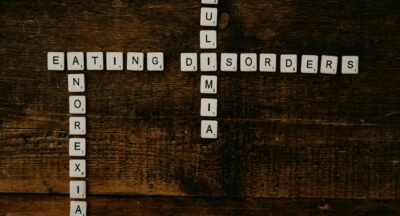
Understanding Eating Disorders According to the Diagnostic and Statistical Manual of Mental Disorders-5-TR
Introduction
The Diagnostic and Statistical Manual of Mental Disorders-5-TR (DSM-5-TR) is a widely recognized and authoritative guide used by mental health professionals to diagnose and classify mental disorders. In this article, we will explore the definition of eating disorders as per DSM-5-TR, their symptoms, diagnostic classification, criteria sets, and subcategories.
Definition of Eating Disorders as per DSM-5-TR
Eating disorders are complex mental health conditions characterized by abnormal eating habits and a preoccupation with food, weight, and body shape. According to DSM-5-TR, there are several types of eating disorders, including anorexia nervosa, bulimia nervosa, binge-eating disorder, and other specified feeding or eating disorders.
Symptoms of Eating Disorders as per DSM-5-TR
The symptoms of eating disorders can vary depending on the specific disorder. However, some common symptoms include:
- Significant weight loss or gain
- Distorted body image
- Obsession with food, calories, and dieting
- Compulsive exercise
- Purging behaviors
- Feelings of guilt, shame, or disgust after eating
- Social withdrawal
Diagnostic Classification of Eating Disorders as per DSM-5-TR
DSM-5-TR classifies eating disorders under the category of “Feeding and Eating Disorders.” The main disorders included in this category are:
- Anorexia nervosa
- Bulimia nervosa
- Binge-eating disorder
- Other specified feeding or eating disorders
Diagnostic Criteria Sets for Eating Disorders as per DSM-5-TR
Each eating disorder has specific diagnostic criteria that must be met for a formal diagnosis. The diagnostic criteria for anorexia nervosa, bulimia nervosa, and binge-eating disorder are as follows:
Anorexia Nervosa:
- Restriction of energy intake leading to a significantly low body weight
- Intense fear of gaining weight or becoming fat
- Disturbance in the way one’s body weight or shape is experienced
Bulimia Nervosa:
- Recurrent episodes of binge eating, characterized by eating large amounts of food within a short period of time
- A sense of lack of control over eating during the episodes
- Recurrent inappropriate compensatory behaviors to prevent weight gain, such as self-induced vomiting, excessive exercise, or misuse of laxatives
Binge-Eating Disorder:
- Recurrent episodes of binge eating, characterized by eating large amounts of food within a short period of time
- A sense of lack of control over eating during the episodes
- Significant distress regarding binge eating
Subcategories of Eating Disorders
DSM-5-TR recognizes that eating disorders can present in various ways, and not all individuals fit neatly into the specific diagnostic criteria for anorexia nervosa, bulimia nervosa, or binge-eating disorder. Therefore, it includes a category called “Other Specified Feeding or Eating Disorders” to capture these subcategories. Some examples of subcategories include atypical anorexia nervosa, purging disorder, and night eating syndrome.
Conclusion
The Diagnostic and Statistical Manual of Mental Disorders-5-TR provides a comprehensive framework for understanding and diagnosing eating disorders. It outlines the definition, symptoms, diagnostic classification, criteria sets, and subcategories of these complex mental health conditions. By using this manual, mental health professionals can accurately identify and treat individuals with eating disorders, leading to improved outcomes and quality of life.
Related Posts
Understanding Cognitive Behavioral Therapy (CBT) Principles
https://www.youtube.com/watch?v=cLYRV29mflM What is CBT? Cognitive Behavioral...
Understanding Anxiety Disorders According to DSM-5-TR
What is the Diagnostic and Statistical Manual of Mental Disorders-5-TR? The...
Understanding Cognitive Behavioral Therapy (CBT) and Its Key Concepts
Cognitive Behavioral Therapy (CBT) is a widely recognized and evidence-based form...
Understanding Eating Disorders According to the Diagnostic and Statistical Manual of Mental Disorders-5-TR
Introduction The Diagnostic and Statistical Manual of Mental Disorders-5-TR...




